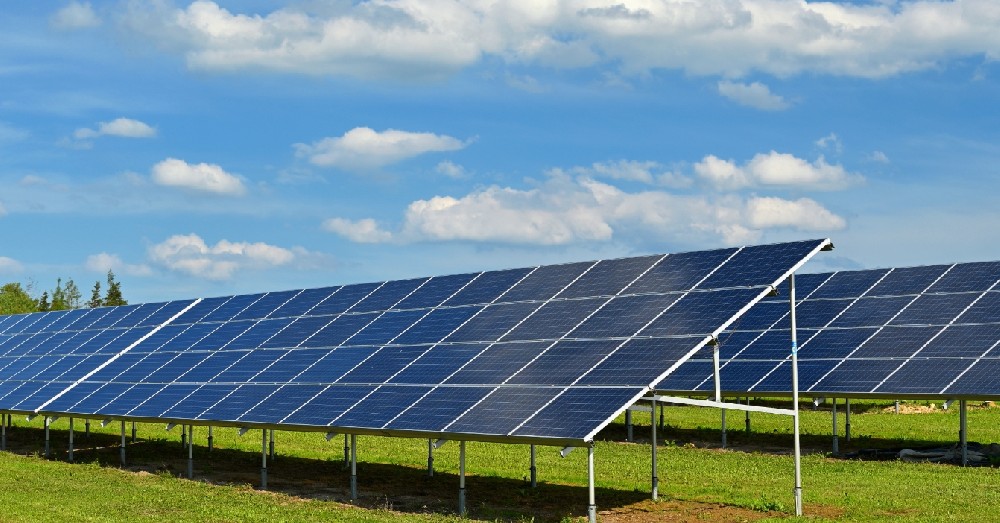

— Blogs —
—Products—
 Consumer hotline +8618073152920
Consumer hotline +8618073152920 WhatsApp:+8615367865107
Address:Room 102, District D, Houhu Industrial Park, Yuelu District, Changsha City, Hunan Province, China
Product knowledge
Time:2025-02-14 16:43:26 Popularity:139
In the global energy transition, photovoltaic (PV) power generation, as an essential part of clean energy, is gaining more and more attention and application. However, in order to achieve the maximum efficiency of PV power stations, accurate meteorological monitoring is indispensable. The photovoltaic power station meteorological monitoring system, by integrating high-precision sensors, real-time data collection, and intelligent analysis functions, provides strong technical support for the efficient operation of PV power stations.

A photovoltaic power station meteorological monitoring system is a comprehensive environmental monitoring solution designed specifically for photovoltaic power plants. It uses high-precision sensors to monitor and record key meteorological parameters such as temperature, humidity, wind speed, wind direction, air pressure, and solar radiation intensity in real-time. These data not only reflect the environmental changes around the PV power station but also provide scientific evidence for the optimization of station operation and fault prevention.
The photovoltaic power station meteorological monitoring system typically consists of the following core components:
- Temperature Sensor: Measures the ambient temperature and evaluates its impact on the performance of photovoltaic panels.
- Humidity Sensor: Monitors air humidity and helps predict potential condensation or snow accumulation.
- Wind Speed and Direction Sensors: Monitors wind changes in real-time to ensure the safety and stability of photovoltaic panels.
- Solar Radiation Sensor: Precisely measures solar radiation intensity, optimizing the angle and orientation of photovoltaic panels.
The data collector is responsible for performing preliminary processing on the data collected by the sensors and transmitting it to the central processing unit.
The central processing unit deeply analyzes the data, generates detailed meteorological reports, and transmits the data to the data center or monitoring platform via wireless or wired methods.
The system supports remote data transmission, allowing operators to monitor the station's operational status anytime and anywhere for efficient management.
By monitoring solar radiation intensity and ambient temperature in real-time, the system helps adjust the angle of photovoltaic panels to ensure maximum sunlight absorption, thus significantly improving power generation efficiency.
Meteorological data can be used to assess the overall performance of the PV system, helping operators optimize system configurations and reduce unnecessary energy losses.
The system can provide early warnings of extreme weather events (such as storms, hail, etc.), allowing operators to take emergency measures to protect the station from damage.
Based on historical data analysis, the system can predict future weather changes, providing scientific support for station operation and maintenance.
Many photovoltaic meteorological stations are powered by solar energy, achieving self-sufficiency in green energy and further promoting sustainable development.

The photovoltaic power station meteorological monitoring system is widely used in various photovoltaic projects, including large-scale ground-mounted power stations, distributed photovoltaic systems, and agricultural-photovoltaic complementary systems. For example:
- In a large-scale photovoltaic power station, the installation of a meteorological monitoring system successfully increased power generation efficiency and saved significant operational costs.
- In distributed photovoltaic systems, small meteorological stations optimized the angle of photovoltaic panels, significantly improving power generation.
- In agricultural photovoltaic projects, the meteorological monitoring system, combined with environmental data, helps farmers optimize irrigation strategies, achieving a win-win situation for both energy and agriculture.

The photovoltaic power station meteorological monitoring system is an indispensable core tool in the modern photovoltaic industry. Through real-time monitoring and intelligent analysis, these systems not only improve power generation efficiency but also enhance the station's ability to resist risks, providing strong support for the sustainable development of green energy. With continuous technological innovation, photovoltaic meteorological monitoring systems will continue to lead the photovoltaic industry into a smarter, more efficient, and environmentally friendly new era. For enterprises and research institutions committed to renewable energy development, investing in this advanced technology is undoubtedly a strategic choice to achieve long-term development goals.
Prev:Solar-Powered Meteorological Stations: Driving a Green Future for Sustainable Weather Monitoring
Next:Principle and Technical Features of Ultrasonic Weather Stations
Related recommendations
Sensors & Weather Stations Catalog
Agriculture Sensors and Weather Stations Catalog-NiuBoL.pdf
Weather Stations Catalog-NiuBoL.pdf
Related products
 Combined air temperature and relative humidity sensor
Combined air temperature and relative humidity sensor Soil Moisture Temperature sensor for irrigation
Soil Moisture Temperature sensor for irrigation Soil pH sensor RS485 soil Testing instrument soil ph meter for agriculture
Soil pH sensor RS485 soil Testing instrument soil ph meter for agriculture Wind Speed sensor Output Modbus/RS485/Analog/0-5V/4-20mA
Wind Speed sensor Output Modbus/RS485/Analog/0-5V/4-20mA Tipping bucket rain gauge for weather monitoring auto rainfall sensor RS485/Outdoor/stainless steel
Tipping bucket rain gauge for weather monitoring auto rainfall sensor RS485/Outdoor/stainless steel Pyranometer Solar Radiation Sensor 4-20mA/RS485
Pyranometer Solar Radiation Sensor 4-20mA/RS485
Screenshot, WhatsApp to identify the QR code
WhatsApp number:+8615367865107
(Click on WhatsApp to copy and add friends)